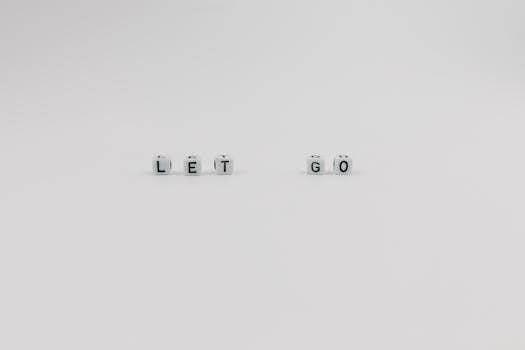
three letter words worksheets pdf
Mastering three-letter words, especially consonant-vowel-consonant (CVC) words like ‘cat’ and ‘pig’, is a vital step in early reading. These words help children learn to sound out words and build a foundation for literacy skills.
Importance of CVC Words
CVC words, such as ‘hat’ and ‘dog,’ are crucial because they introduce simple phonetic patterns, allowing children to connect sounds with letters. This foundational understanding is vital for decoding more complex words later on. Learning CVC words provides a strong base for reading fluency, spelling accuracy, and overall literacy development in early childhood education, building reading confidence.

Worksheet Features and Design
Worksheets for three-letter words often include visual aids, such as pictures, to enhance learning. They are designed to be engaging and user-friendly, making them accessible for young learners.
Printable PDF Format
The worksheets are typically available as printable PDF files, making them easy to use as hard copies. This format ensures that the worksheets are accessible for classroom and home use, allowing for convenient practice. The PDF format allows for easy downloading and printing, which will make it easier to use for children. These worksheets can be an excellent resource for learning.
Interactive Digital Options
Many resources also offer interactive digital versions, such as Google Slides, suitable for distance learning or teletherapy. These digital worksheets provide engaging and interactive ways for children to practice. Digital formats can include features like drag-and-drop activities and interactive elements, which enhance learning and engagement. These options offer flexibility for various learning environments.
Picture Association
Worksheets often include pictures related to the three-letter words. This visual aid helps children connect the word with its meaning, enhancing understanding and recall. Picture association makes learning more engaging and accessible, particularly for young learners. Visual cues are crucial for early readers, helping them grasp word recognition and vocabulary. This aids in building a strong foundation for literacy.

Skills Developed
Using these worksheets helps children develop handwriting, spelling, and word recognition skills. They also introduce phonics, aiding in understanding how letters combine to form words. These are foundational literacy skills.
Handwriting Practice
Worksheets often include tracing activities, providing opportunities for children to practice forming letters correctly. This helps develop fine motor skills and muscle memory needed for writing. Consistent practice with letter formation also ensures legibility and helps children make the connection between written and spoken words. Furthermore, it builds confidence in their ability to write independently, encouraging further engagement with literacy.
Spelling and Word Recognition
These worksheets greatly assist with spelling by introducing common three-letter words. They encourage children to recognize the visual patterns of words, improving their ability to identify and recall them. Repeated exposure to these patterns helps build word recognition skills, which are fundamental for reading fluency and comprehension. Through practice, children become more proficient at recognizing and spelling these basic words.
Worksheets featuring three-letter words serve as an excellent introduction to phonics. These resources help children understand the sounds that letters make and how they combine to form words. By focusing on simple CVC patterns, these worksheets aid in developing a foundational understanding of phonics. This knowledge empowers children to decode and comprehend words more efficiently, thus improving reading skills.
Types of Activities
Three-letter word worksheets include tracing, word building games, and matching activities. These activities provide a fun way for children to learn new words and enhance their reading skills.
Tracing Activities
Tracing worksheets provide a hands-on approach to learning three-letter words. These activities help children practice forming letters correctly and develop fine motor skills. By tracing, they reinforce their understanding of letter shapes and word structure, which is essential for handwriting and spelling. These worksheets are perfect for beginners and build a solid foundation for writing.
Word Building Games
Engaging word building games offer a fun way to learn three-letter words. These activities often involve manipulating letter tiles or blocks to create words. Such games encourage children to explore letter combinations, develop phonemic awareness, and enhance their understanding of how letters form words. These games can be played individually or in small groups.
Matching and Sorting
Matching and sorting activities are excellent for reinforcing three-letter word recognition. These activities might involve pairing words with corresponding pictures or grouping words based on their vowel sounds. Sorting tasks can also focus on identifying rhyming words, further developing phonological awareness and helping kids recognize word patterns in a fun, interactive way.
Target Audience
These worksheets are primarily designed for preschool, kindergarten, and first-grade students. They are ideal for children who are beginning to learn phonics and word recognition skills.
Preschool and Kindergarten
Worksheets focusing on three-letter words are exceptionally beneficial for preschool and kindergarten children. These young learners are introduced to the basics of letter and word recognition. These resources help in word formation and writing skills. The simplicity of three-letter words provides an accessible entry point for early literacy, fostering confidence and a positive attitude toward learning to read.
First Grade Students
For first-grade students, three-letter word worksheets serve as valuable tools for solidifying early reading and spelling skills. These worksheets help reinforce phonics patterns and build fluency. They also aid in expanding vocabulary and increasing word recognition speed. Activities may include tracing, writing, and matching exercises, providing diverse practice opportunities to further support their literacy development.

Examples of Three-Letter Words
Common examples include CVC words like ‘cat,’ ‘dog,’ and ‘sun’. Other simple three-letter words are ‘ink,’ ‘aid,’ ‘bad,’ ‘eat,’ and ‘fig’, which provide a basic vocabulary foundation for young learners.
Common CVC Examples
Consonant-vowel-consonant (CVC) words are foundational for early reading. These words, such as ‘cat’, ‘dog’, ‘sun’, ‘pig’, ‘hat’, and ‘bed’, are often the first words children learn to sound out. They provide a simple and consistent phonetic structure, making them ideal for introducing phonics concepts. CVC words help build confidence and fluency in beginning readers, paving the way for more complex words.
List of Simple Three-Letter Words
A variety of simple three-letter words are used to build a child’s early vocabulary. Examples include ‘ink’, ‘aid’, ‘bad’, ‘cat’, ‘dog’, ‘eat’, ‘fig’, ‘god’, ‘hat’, ‘jug’, ‘kit’, ‘let’, ‘may’, ‘net’, ‘our’, ‘pet’, ‘rub’, ‘sit’, ‘tag’, ‘urn’, ‘van’, ‘war’, ‘yes’, and ‘zip’. These words help young learners grasp basic phonics and word recognition, setting them up for success in reading and spelling.
Benefits of Learning Three-Letter Words
Learning three-letter words motivates children to read and write, expanding their vocabulary. This also improves academic performance and strengthens their spelling skills, which are essential for overall literacy.
Improved Reading Skills
By practicing with three-letter words, children enhance their ability to recognize and decode words quickly, leading to improved reading fluency. These foundational skills enable them to comprehend text more easily and build confidence in their reading capabilities. The repetition and familiarity with CVC patterns greatly contribute to this development, making reading a more enjoyable experience.
Vocabulary Development
Learning three-letter words introduces children to a range of new vocabulary, expanding their understanding of language. As they master these simple words, they begin to form a basis for comprehending more complex words later on. This early exposure helps build a stronger foundation for future vocabulary acquisition and helps them understand the world through language.
Enhanced Academic Performance
A strong grasp of three-letter words significantly enhances a child’s academic performance across multiple subjects. These foundational literacy skills enable them to read instructions, understand concepts, and engage with learning materials more effectively. This early success builds confidence and sets the stage for continuous academic progress in later grades, paving the way for success in school.
Where to Find Worksheets
Numerous resources offer free printable worksheets to help children with three-letter words. These are available from various educational websites and online marketplaces.
Free Printable Resources
Many websites offer free, downloadable PDF worksheets focusing on three-letter words. These resources often include a variety of activities, such as tracing, word matching, and picture association. These printables are perfect for parents and teachers looking for easy-to-access materials to support early literacy instruction. You can often find sets of multiple worksheets designed for different learning levels and needs.
Online Marketplaces
Online marketplaces like Etsy also offer a wide array of three-letter word worksheets. These platforms often feature unique, hand-made designs that can provide a fresh approach to learning. You can find both digital downloads and physical products, catering to different preferences. Shopping on these marketplaces allows you to support independent creators while accessing quality educational materials.
Additional Resources
Beyond worksheets, flashcards and word blocks are excellent tools for reinforcing three-letter words. Hands-on activities, like using LEGOs to build words, also enhance learning and engagement.
Flashcards and Word Blocks
Flashcards provide a visual aid for quick word recognition, aiding memorization of three-letter words. Word blocks, whether physical or digital, allow children to manipulate letters to form words, reinforcing the concept of letter combinations. These tools provide a multi-sensory approach, supporting different learning styles and making the learning process more engaging and interactive. Combining these with worksheets can lead to more effective learning.
Hands-on Activities
Incorporating hands-on activities such as using building blocks or LEGOs to construct three-letter words can greatly enhance learning. These activities help children learn through tactile experiences, which makes word formation more concrete and memorable. They can also engage in sorting activities, using physical objects to match words with pictures, making the learning process fun and interactive, which complements the more traditional worksheet exercises.

Using Worksheets Effectively
To use worksheets effectively, integrate them into literacy centers, making learning engaging and fun. Employ diverse activities and approaches to ensure students are motivated and actively participating.
Engaging Learning Approaches
To keep children motivated while learning three-letter words, use a variety of engaging approaches. Incorporate visual cues, word games, and hands-on activities like using blocks or flashcards. Turning learning into a fun experience helps children understand word formation, letter recognition, and basic reading skills more effectively. This approach will ensure that they remain enthusiastic about mastering new vocabulary.
Integrating into Literacy Centers
Incorporating three-letter word worksheets into literacy centers provides a structured learning environment. These centers can include various activities such as word tracing, matching games, or building words with blocks. This setup allows children to practice at their own pace, reinforcing their skills in a self-directed and interactive manner. This approach is a great help for teachers to have organized and efficient learning.
Variety of Worksheet Types
Worksheets include CVC word practice, where students work with consonant-vowel-consonant patterns. Sight word worksheets focus on commonly used words. These diverse activities support different learning styles.
CVC Word Worksheets
CVC word worksheets are designed to help children grasp the fundamental consonant-vowel-consonant pattern in three-letter words. These worksheets often include pictures to aid in word recognition and pronunciation. Activities might involve filling in missing letters, matching words to pictures, or sounding out each letter to read the complete word. They provide essential practice for early reading skills.
Sight Word Worksheets
Sight word worksheets for three-letter words focus on words that children should recognize instantly, rather than sounding them out. These worksheets often include activities like tracing, writing, and identifying the sight words within sentences or word lists. This method encourages memorization and quick recall, improving reading fluency. Such practice builds a solid base for reading comprehension.
Three-letter word worksheets are valuable tools for early literacy, offering benefits from improved reading skills to vocabulary development. These resources are available in both free and paid formats online.
Utilizing three-letter word worksheets significantly aids in early literacy, fostering improved reading, writing, and spelling skills. These resources, available as free printables and online products, offer diverse activities including tracing, word building, and matching games. They support vocabulary growth, enhance phonics comprehension, and boost overall academic performance, providing a solid foundation for future learning success.